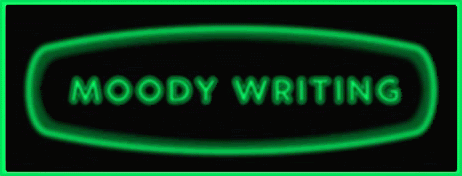Let’s say you’re
familiar with most of the basic guidelines when it comes to writing fiction.
You know none of these suggestions guarantees a good story, but you try to
apply them as much as possible. Can’t hurt right?
So you have a
sympathetic main character with a clear goal, obstacles in the way, high
stakes, an action-packed opening, a minimum of adverbs, active characters and
you keep it all moving at a breakneck pace.
But when you show
this tightly constructed thrill-ride to people whose judgement you trust, you
don’t get the reaction you were hoping for. They don’t hate it, in fact they
have lots of nice things to say about it, but it just doesn’t grab them.
They like the genre,
have no problem understanding what happens and why, and certainly there are
bestselling books out there with similar premises and characters so this sort
of story definitely can work, and yet... it just doesn’t.
What is the missing
ingredient? And what’s the best way to make sure it isn’t missing from your
story?
Of course there are
many reasons why a story might not be working, but most of these are easily
spotted by critique partners. While it can be tricky seeing weaknesses in our
own writing, a fresh pair of eyes (and a healthy lack of tact) usually put us
back on the straight and narrow.
The problem comes
though when your writing gets to the level where the obvious mistakes have been
weeded out and whatever’s preventing the reader from fully engaging isn’t easy
to spot. You know from the many ‘damning with faint praise’ reactions that
something’s not quite right, but they can’t put their finger on it and neither
can you.
What is often
missing is a level of complication from the main character that colours the
whole story, or in some cases it is present but in the wrong place.
Here’s an example of
the kind of thing I mean: Our hero discovers that a great and revered writer
didn’t write his greatest work and further investigations uncover a web of lies
and deceits.
Now, could that
story turn out to be interesting? Sure, it has the potential to be an
entertaining read. So then, when do you think you would you feel like you knew
that it was going to live up to that potential? When the plagiarism is
discovered? When the reasons behind the lie are revealed? When life threatening
consequences are encountered? When the investigation uncovers an even greater
lie?
It’s hard to tell
isn’t it?
A lot depends on the specifics of the story and how events unfold.
And if it takes a hundred pages to get to that point, the reader might give up
before they get there or lose interest in the character even after things pick
up.
There are ways
around this, just fill those hundred pages with excitement to keep the reader
distracted until the main plot kicks in. If the story has graphic violence,
wacky characters, zombies, serial killers or whatever’s in the news (ebola
strikes!) then you can get away with a main character who runs around doing
enough stuff to keep the reader turning pages. Cheap tricks and a sense of
urgency sell a lot of books.
But alternatively
what if the story was changed to: Our hero discovers that his father, a great
and revered writer, didn’t write his greatest work and further investigations
uncover a web of lies and deceits.
All I’ve changed is
the character’s relationship to his goal. Instead of pursuing an interesting
puzzle, he’s now deeply invested in finding the truth. And this complication
will affect how he deals with every single situation and person he encounters.
When should we learn
that the great writer is our hero’s father? As early as possible, since this
gives you the most bang for your buck. The greater investment for the character
relates directly into greater investment for the reader.
If, though, you were
convinced that you wanted to hold back the information and reveal it as a
surprise later, then you would have to either resort to cheap tricks as before
(and remember, cheap tricks work) or you have to come up with another, earlier
complication.
Here’s another
example: A woman at a big company is going for a promotion but her main rival
is the boss’s son. As they try to one-up each other an attraction forms and
they fall in love.
When do things get
complicated? Probably not until she realises she’s falling for him. How long do
we have to wait for that to happen? Probably quite a long time. First we have
to set up the job, the promotion, the rival, and then show the attraction
develop. That’s a lot of stuff that won’t be coloured by the complication
(because the complication doesn’t exist yet).
It would be pretty
jarring to have her fall in love at first sight in chapter one. Although not
impossible to do—start off with a passionate one night stand (our girl has no
time for love or a relationship), then head off to work to find the boss’s son
has just transferred to her office, guess who? A cheap trick, certainly, but
also a very workable one.
On the other hand,
you can look at reworking the story. Maybe she’s the boss’s daughter but she
wants to make it on her own so she gets a job as an intern in dad’s company.
Only one person will
get the job after the trail period, so it’s dog eat dog, but her main rival is
also devilishly handsome... Here the attraction to a rival is still gradually
developed, but it’s in addition to the first complication. Does the spoilt rich
girl have what it takes? Will she succeed without daddy’s help? Will she get
discovered? It colours every action she takes.
When do we find out
what she’s doing? Again, as early as possible is best. That doesn’t mean you
have to reveal it completely. Her getting ready for work and pulling a cheap
business suit out of wardrobe full of expensive designer gear can be enough to
catch the reader’s interest and get them looking for clues.
Alternatively, you
could start with her going: My name is
Jenny Sinclair and my father is the eleventh richest man in America. He started
out without a penny to his name, and that’s exactly what I plan to do.
As on-the-nose and
telling as something like that is, it would still work. This isn’t about making
the opening as engaging or gripping as possible. You can do that or not as you
wish. What this is about is establishing a character-based complication as
early as possible. One that affects every choice and decision the character makes.
Once you have this
kind of a wrinkle established it can lift what may have been a mundane moment
and add an extra level of tension to
dramatic moments we’ve all seen before.
If you found this post useful please give it a retweet. Cheers.








































































































13 comments:
Basically, it's making sure there is a direct connection between your main character and the conflict.
Apparently, my story is missing cake. Lots and lots of cake. And eclairs. :)
@Alex - and making sure that connection is on the page and not just in your head.
@Elise - well, you do live in France, shouldn't be too hard to come by.
"a fresh pair of eyes (and a healthy lack of tact)" is my favorite kind of critique partner.
I know this problem well. Getting that inherent conflict/goal out there in the open, and then leaving room for twists and turns, is a lot harder than you just made it sound. lol
Interesting post. Most of my work is of the short story ilk and I have a problem writing longer pieces as I feel that I am padding out the story.
Whenever the story turns boring or unclear, one should add a hero's enemy or a character with an unusual point of view on everything what happens within the story.
@Dolorah - tact is all well and good, but nothing like being slapped in the face with a cold fish to get your gears turning.
@Lexa - always easy to come up with examples, different story when I try to make it work in my own writing.
@L - that's quite common, the trick is to right it with padding and then only judge it when you get to the end of the draft. Becomes much easier to see what has to go and what can be woven into the narrative.
@Lily - ah, if only it were that straightforward. Unfortunately that can lead to a very convoluted story with too many tangents.
This post is rather interesting in the fact that I was just wondering what was missing in my stories. Thanks for sharing this.
www.modernworld4.blogspot.com
As I read this post, I was saying, "yeah, that makes sense, I get that". Then I read Lexa's comment, "a lot harder than you just made it sound". Yup, I get that, too.
The blog is good enough I again n again read this.
write my essay
I am looking for a smart and creative blog, so I found your blog Which looks good. it is helpful for me. Thanks for the such kind of information your story